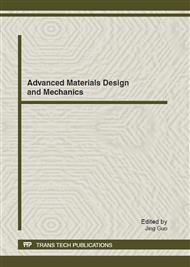[1]
Burda Martin; Harding Matthew; Hausman Jerry: A Poisson mixture model of discrete choice. Journal Of Econometrics, 166: 184-203. (2012).
DOI: 10.1016/j.jeconom.2011.09.001
Google Scholar
[2]
Neumann Michael H: Absolute regularity and ergodicity of Poisson count processes. Bernoulli, 17: 1268-1284. (2011).
DOI: 10.3150/10-bej313
Google Scholar
[3]
Alvarez Dora; Hidalgo Hugo: Document analysis and visualization with zero-inflated poisson. Data Mining And Knowledge Discovery. 19: 1-23. (2009).
DOI: 10.1007/s10618-009-0127-4
Google Scholar
[4]
Lawal. BH : Zero-inflated count regression models with applications to some examples, Quality & Quantity, 46: 19-38(2012).
DOI: 10.1007/s11135-010-9324-x
Google Scholar
[5]
Hall Daniel B: Shen Jing: Robust Estimation for Zero-Inflated Poisson Regression. Scandinavian Journal Of Statistics. 37: 237-252(2010).
DOI: 10.1111/j.1467-9469.2009.00657.x
Google Scholar
[6]
Lambert D: Zero-inflated Poisson regression with application to defects in manufacturing, Technometrics, 34(1): 1-14. (1992).
DOI: 10.2307/1269547
Google Scholar
[7]
Mark N. Harris, Xueyan Zhao: A zero-inflated ordered probit model with an application to modeling tobacco consumption, Journal of Econometrics, 141: 1073-1099(2007).
DOI: 10.1016/j.jeconom.2007.01.002
Google Scholar
[8]
Bunge John; Barger Kathryn: Parametric Models for Estimating the Number of Classes. Biometrical Journal, 50: 971-982. (2008).
DOI: 10.1002/bimj.200810452
Google Scholar
[9]
Johnstone D. J: Economic Interpretation of Probabilities Estimated by Maximum Likelihood or Score. Management Science, 57: 308-314. (2011).
DOI: 10.1287/mnsc.1100.1272
Google Scholar
[10]
Garcia-Perez A. : Chi-square tests under models close to the normal distribution. Metrika, 63: 343-354. (2006).
DOI: 10.1007/s00184-005-0024-9
Google Scholar
[11]
Kakizawa Yoshihide.: Improved chi-squared tests for a composite hypothesis. Journal Of Multivariate Analysis, 107: 141-161. (2012).
DOI: 10.1016/j.jmva.2012.01.008
Google Scholar
[12]
Chaloupka Frank J.; Straif Kurt; Leon Maria E.: Effectiveness of tax and price policies in tobacco control. Tobacco Control. 20: 235-238(2011).
DOI: 10.1136/tc.2010.039982
Google Scholar
[13]
Chaloupka Frank J.; Yurekli Ayda; Fong Geoffrey T.: Tobacco taxes as a tobacco control strategy. Tobacco Control, 21: 172-180. (2012).
DOI: 10.1136/tobaccocontrol-2011-050417
Google Scholar
[14]
Hu Teh-wei; Mao Zhengzhong; Shi Jian : The role of taxation in tobacco control and its potential economic impact in China. Tobacco Control, 19: 58-64. (2010).
DOI: 10.1136/tc.2009.031799
Google Scholar


